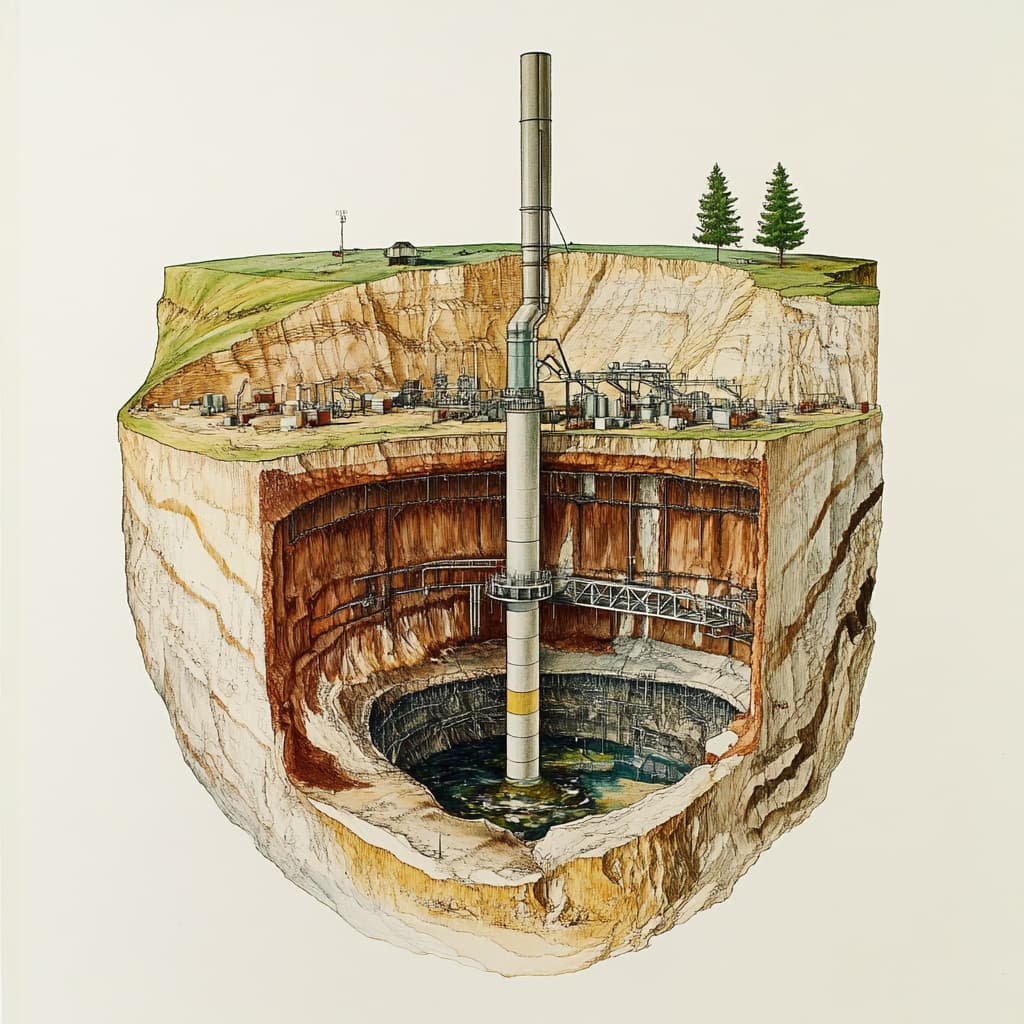Beneath Our Feet: Exploring the Role of Geothermal Energy in Europe’s Urban Future
As cities across Europe seek cleaner and more efficient energy systems, attention is shifting to lesser-known solutions that offer consistency and environmental benefits. Among these options, geothermal energy—heat naturally stored beneath the Earth’s surface—presents a compelling opportunity for urban areas. This form of energy, often overlooked in mainstream discussions, is gaining momentum for its potential to support sustainable living in a changing world.
What Geothermal Energy Really Offers
Unlike solar or wind power, which depend on weather conditions, geothermal systems can operate steadily throughout the year. They draw heat from underground, using it to warm buildings or, in some locations, generate electricity. In densely populated cities, the focus is primarily on heating—especially for homes, schools, and public facilities.
The strength of geothermal systems lies in their reliability. Once installed, they can operate with minimal environmental impact. They’re also space-efficient, often fitting beneath structures or integrated into existing heating networks.
A Growing Need for Urban Heat Alternatives
In many European cities, buildings still rely heavily on fossil fuels for heating. With growing concerns about climate change and energy security, alternative sources are in demand. Shallow geothermal installations—such as ground-source heat pumps—are particularly useful in retrofitting older buildings or designing new low-carbon districts.
In cities where centralized heating already exists, such as Warsaw or Vienna, it is possible to incorporate geothermal heat into the grid, reducing reliance on gas or coal-fired systems. This integration not only lowers emissions but also shields communities from volatile energy markets.
Urban Examples from Across the Continent
Though still in early stages in many regions, some European cities are already applying geothermal technology with success.
In suburban areas around Paris, a network of geothermal heating plants has served households for decades, drawing energy from deep aquifers. In Germany, cities like Munich are investing in subsurface heat to power municipal systems, with long-term goals of reaching net-zero emissions. The Netherlands is also promoting geothermal use in both agriculture and urban planning, reducing dependence on imported gas.
These cases highlight how geothermal projects, when matched with supportive policies and good planning, can make a real difference.
Technological Progress Expands the Map
Historically, geothermal systems were mostly used in areas with volcanic activity or special geological formations. Today, however, innovations in drilling and heat exchange have made them feasible in more locations.
Ground-source heat pumps, for example, are now common in parts of Northern and Central Europe, offering a simple way to warm homes without using gas or oil. Deeper systems, including enhanced geothermal technologies, are also being tested to tap into higher-temperature zones.
In addition, digital tools are helping urban planners and engineers model underground resources, improving efficiency and minimizing risk.
Understanding the Challenges
While promising, geothermal development is not without hurdles. The cost of initial drilling can be high, particularly in deep systems. Even though long-term maintenance is generally low, the start-up phase often requires financial support or incentives.
Another issue is the lack of familiarity. Many decision-makers and citizens are more comfortable with solar panels or wind turbines, which are more visible and widely discussed. Geothermal systems, hidden underground, are less understood and sometimes met with skepticism.
Regulatory complexity can also slow progress. In some countries, navigating permits and land-use approvals takes months or even years, delaying otherwise viable projects.
A Complement to Other Renewable Sources
Geothermal technology should not be seen as a replacement for solar or wind power, but rather as part of a balanced energy strategy. In urban settings, it can supply heat during periods when other renewables fall short. It can also work well alongside district heating or seasonal thermal storage systems, offering flexibility and consistency.
In colder months, when solar output drops and energy demand rises, geothermal systems can provide a steady supply of warmth. This stability makes them valuable for both individual households and entire neighborhoods.
Support from Policy and Innovation
Governments across Europe are beginning to recognize the importance of diversifying clean energy sources. Funding programs, research initiatives, and urban development plans increasingly include geothermal as a viable component.
The European Green Deal and associated programs encourage cities to experiment with sustainable heating models, including geothermal. At the same time, universities and engineering firms are developing new ways to reduce drilling costs, assess underground heat potential, and design user-friendly systems for dense environments.
The Path Forward
For Europe’s cities, which face rising populations, aging infrastructure, and environmental pressure, geothermal systems offer a resilient and low-impact heating solution. While not universally applicable, in places where conditions are suitable, they can serve as a cornerstone of local sustainability strategies.
Education and awareness campaigns will be key. People are more likely to support these systems if they understand how they work and what benefits they provide. By including geothermal in urban planning and energy discussions, cities can create a more balanced and informed path to climate neutrality.
Conclusion: Quiet Power with Lasting Impact
Geothermal energy is not a flashy solution. It doesn’t turn heads like a field of wind turbines or a solar rooftop. Yet, beneath the surface, it holds significant power—literally and figuratively—for shaping cleaner, more stable urban environments.
As European cities look ahead, investing in smart, quiet technologies like geothermal may prove to be among the most valuable choices. By drawing warmth from the earth itself, we move one step closer to energy systems that are as natural as they are necessary.


Leave a Reply